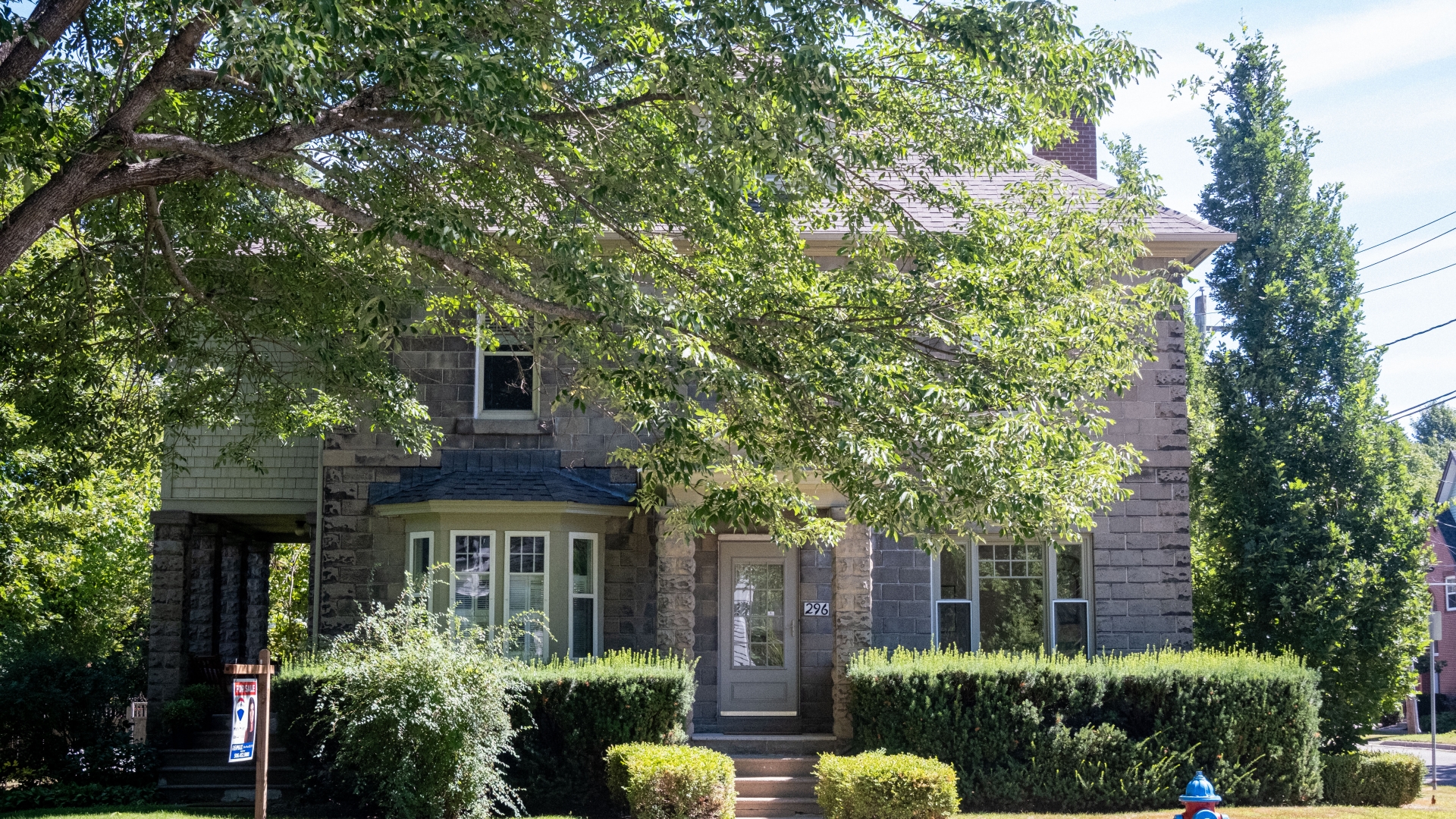Erected in 1916, this 2 ½-storey concrete block dwelling is situated on the northeast corner of Church Street and Churchill Row.
Heritage Value
This dwelling is significant not only because it stands as an example of wartime housing but for its distinctive construction material. Built during the First World War, this concrete block house demonstrates that domestic housing development continued in the midst of the War. Construction materials were both dear and in short supply during the War, and the use of concrete block may have represented a strategic choice. Concrete block offered a cost effective alternative to building in stone.
This lot had been purchased from prominent Fredericton educator, Dr. George A. Inch, who owned the adjacent property on Church Street. The earliest occupant of this house, Silas B. Waas, was employed as the Assistant Superintendent of the Chipman Grandlake Railway, a line completed shortly before the First World War.
Character-Defining Elements
The character-defining elements associated with the concrete block structure at 296 Church Street include:
-
2-storey concrete structure
-
location on a corner lot
-
columned entrance topped by triangular pediment
-
columned side porch
-
bay window on front façade
-
dormer window on front facing side


